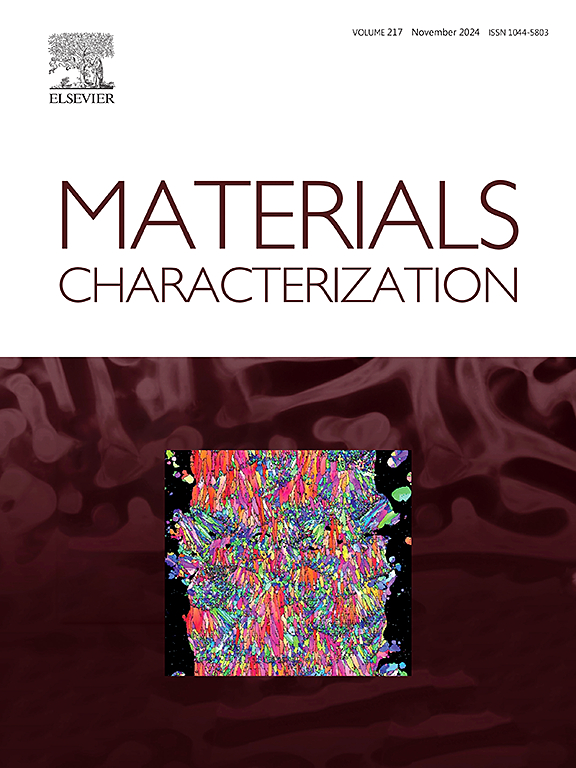Enhancing mechanical performance of high manganese austenitic steel through deformation at cryogenic temperatures and high strain rates
IF 5.5
2区 材料科学
Q1 MATERIALS SCIENCE, CHARACTERIZATION & TESTING
引用次数: 0
Abstract
We investigate the mechanical properties of a novel high‑manganese austenitic steel (HMAS) subjected to dynamic tensile loading at 3000 s-1 at a cryogenic temperature (77 K) using a split Hopkinson tension bar (SHTB) coupled with a cooling system. Compared to room temperature quasi-static tensile, we observed significant increases in yield strength from 850 MPa to 1260 MPa and tensile strength from 1100 MPa to 1620 MPa, along with a fracture strain of 0.41. These enhancements are primarily attributed to the microstructure evolution under dynamic loading at high strain rates at cryogenic temperature, particularly the formation of complex deformation twins (DTs) networks that contribute to strain-hardening, thereby enhance both strength and ductility of HMAS under extreme conditions. These findings not only demonstrate the impact of extremely cryogenic temperatures and high strain rates on the mechanical behavior of HMAS, but also highlight its potential in applications that demand robust performance in harsh environments.
通过在低温和高应变速率下的变形提高高锰奥氏体钢的力学性能
本文研究了一种新型高锰奥氏体钢(HMAS)在低温(77 K)下3000 s-1动态拉伸载荷下的力学性能,采用分离式霍普金森拉力棒(SHTB)和冷却系统。与室温准静态拉伸相比,我们观察到屈服强度从850 MPa增加到1260 MPa,抗拉强度从1100 MPa增加到1620 MPa,断裂应变为0.41。这些增强主要归因于低温下高应变率动加载下的微观结构演变,特别是复杂变形孪晶(dt)网络的形成,有助于应变硬化,从而提高HMAS在极端条件下的强度和延展性。这些发现不仅证明了极低温和高应变率对HMAS力学行为的影响,而且还突出了其在恶劣环境下需要强大性能的应用中的潜力。
本文章由计算机程序翻译,如有差异,请以英文原文为准。
求助全文
约1分钟内获得全文
求助全文
来源期刊

Materials Characterization
工程技术-材料科学:表征与测试
CiteScore
7.60
自引率
8.50%
发文量
746
审稿时长
36 days
期刊介绍:
Materials Characterization features original articles and state-of-the-art reviews on theoretical and practical aspects of the structure and behaviour of materials.
The Journal focuses on all characterization techniques, including all forms of microscopy (light, electron, acoustic, etc.,) and analysis (especially microanalysis and surface analytical techniques). Developments in both this wide range of techniques and their application to the quantification of the microstructure of materials are essential facets of the Journal.
The Journal provides the Materials Scientist/Engineer with up-to-date information on many types of materials with an underlying theme of explaining the behavior of materials using novel approaches. Materials covered by the journal include:
Metals & Alloys
Ceramics
Nanomaterials
Biomedical materials
Optical materials
Composites
Natural Materials.
 求助内容:
求助内容: 应助结果提醒方式:
应助结果提醒方式:


